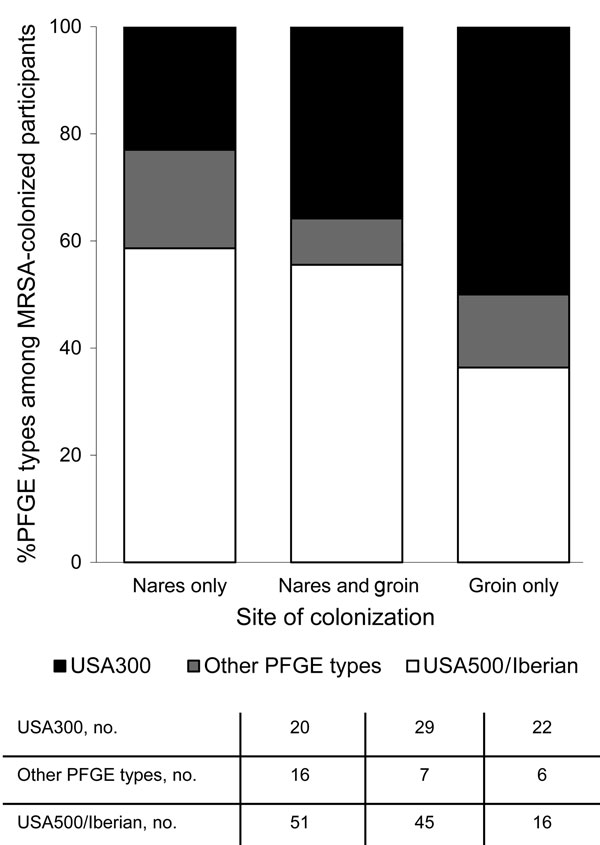Volume 19, Number 4—April 2013
Research
Methicillin-Resistant Staphylococcus aureus Colonization of the Groin and Risk for Clinical Infection among HIV-infected Adults
Figure 1

Figure 1. . . Percentage of pulsed-field gel electrophoresis (PFGE) types by anatomic site of detection in methicillin-resistant Staphylococcus aureus (MRSA)–colonized HIV-infected adults (n = 212 MRSA colonizing isolates; 3 study visits aggregated), Atlanta, Georgia, USA, 2007–2009.
Page created: March 13, 2013
Page updated: March 13, 2013
Page reviewed: March 13, 2013
The conclusions, findings, and opinions expressed by authors contributing to this journal do not necessarily reflect the official position of the U.S. Department of Health and Human Services, the Public Health Service, the Centers for Disease Control and Prevention, or the authors' affiliated institutions. Use of trade names is for identification only and does not imply endorsement by any of the groups named above.